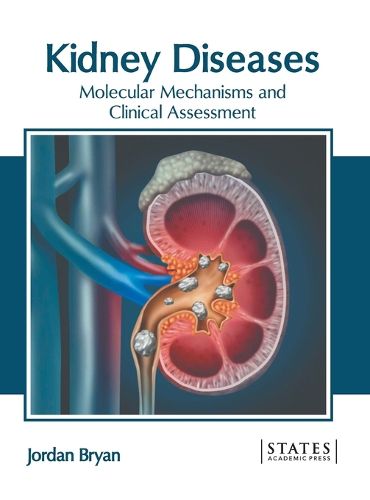Readings Newsletter
Become a Readings Member to make your shopping experience even easier.
Sign in or sign up for free!
You’re not far away from qualifying for FREE standard shipping within Australia
You’ve qualified for FREE standard shipping within Australia
The cart is loading…






The kidneys are two reddish-brown bean-shaped organs found in vertebrates. They are situated on the right and left sides of the retroperitoneal space. The kidneys are essential for the body's basic physiological activities. Kidney dysfunction disrupts these physiological activities and can result in a variety of diseases. A range of immunological, toxic and ischemic insults can harm kidney cells. This results in inflammation and cell death, which in turn leads to organ damage or complete failure. The damage to renal cells and the subsequent cellular regeneration processes are both influenced by inflammation. However, chronic inflammation can lead to renal fibrosis. The kidneys have the ability to regenerate after injury and can recover completely based on the type of renal lesions. The therapeutic intervention options facilitating the regeneration process are limited to fluid management and extracorporeal kidney support. This book unravels the recent studies on kidney diseases. It attempts to understand the molecular mechanisms and clinical assessment of these diseases. This book will help new researchers by foregrounding their knowledge in this area of study.
$9.00 standard shipping within Australia
FREE standard shipping within Australia for orders over $100.00
Express & International shipping calculated at checkout
The kidneys are two reddish-brown bean-shaped organs found in vertebrates. They are situated on the right and left sides of the retroperitoneal space. The kidneys are essential for the body's basic physiological activities. Kidney dysfunction disrupts these physiological activities and can result in a variety of diseases. A range of immunological, toxic and ischemic insults can harm kidney cells. This results in inflammation and cell death, which in turn leads to organ damage or complete failure. The damage to renal cells and the subsequent cellular regeneration processes are both influenced by inflammation. However, chronic inflammation can lead to renal fibrosis. The kidneys have the ability to regenerate after injury and can recover completely based on the type of renal lesions. The therapeutic intervention options facilitating the regeneration process are limited to fluid management and extracorporeal kidney support. This book unravels the recent studies on kidney diseases. It attempts to understand the molecular mechanisms and clinical assessment of these diseases. This book will help new researchers by foregrounding their knowledge in this area of study.